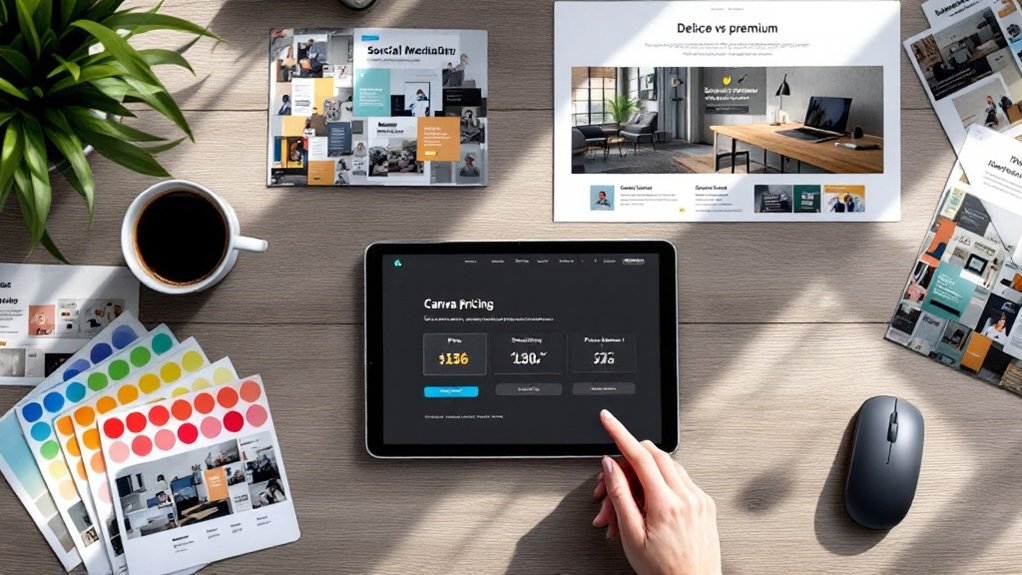Building a recommender system starts with data collection – clicks, purchases, and ratings. Define your problem first, then choose your approach: collaborative filtering matches similar users, while content-based focuses on item features. Demographic and knowledge-based systems use profiles and preferences respectively. Most successful implementations are hybrids. Companies see sales jumps up to 29% with good recommenders. Each user interaction makes the system smarter, continuously improving those spot-on suggestions.

While scrolling through Netflix or shopping on Amazon, users rarely think about the complex machinery working behind the scenes. Those personalized suggestions don't appear by magic. They're the product of sophisticated recommender systems—AI algorithms designed to predict what users might like based on their previous behavior.
These digital matchmakers connect people with products, movies, or music they didn't even know they wanted. Pretty clever stuff.
Building these systems isn't exactly a weekend project. First, you need data. Lots of it. User interactions like clicks, purchases, and ratings form the backbone of any decent recommender system. Throw in some demographic information—age, location, income level—and you've got context. The success of your system depends heavily on data preparation to ensure quality recommendations.
Data is the lifeblood of recommender systems—clicks, purchases, and user details fuel the engine of personalized suggestions.
Don't forget about the items themselves. Product descriptions, categories, prices—all essential ingredients in the recommendation stew. Successful implementation requires problem definition before diving into the technical details.
There are different flavors of recommender systems, each with their own recipe. Collaborative filtering is the most popular kid in school. It works by finding users similar to you and recommending items they enjoyed. Netflix loves this approach.
Content-based systems don't care about other users; they match items based on their characteristics. Watched a horror movie? Here's another one. Simple.
Some systems use demographics to make educated guesses. Others take a knowledge-based approach, using explicit information about user preferences. Can't decide? Hybrid systems combine multiple techniques. They're overachievers.
These systems aren't just digital personal shoppers—they're money makers. They boost user engagement and conversion rates through personalized experiences. Amazon's "customers who bought this also bought" feature? Pure profit. Major companies like Amazon have reported as much as 29% sales increase from implementing recommendation features into their platforms.
The real magic happens when the system learns and adapts. Each click, each purchase, each yawn-inducing movie you abandon mid-stream—it's all valuable feedback. Modern recommenders can even address the common cold start problem by employing multi-armed bandit algorithms when there's insufficient data for new users or items.
The algorithm gets smarter. Your recommendations get better.
And you keep coming back for more. Mission accomplished.
Frequently Asked Questions
How Do I Handle the Cold-Start Problem?
Cold-start problem? Not easy to crack. Recommender systems need data to function. When there's none—for new users or items—they're flying blind.
Smart folks tackle it with multiple strategies. Non-personalized recommendations (popular items), content-based filtering using attributes, demographic data for targeting, and active learning to gather feedback fast.
For new items, metadata and similarity matching work well.
Hybrid approaches usually get the best results. No magic bullet here.
What Metrics Best Evaluate Recommender System Performance?
Evaluating recommender systems isn't one-size-fits-all. Period.
Businesses typically use accuracy metrics like MAE or RMSE for prediction quality, while NDCG and MAP assess ranking effectiveness.
When user satisfaction matters most? Precision@K and Recall@K shine.
For the bottom line, nothing beats conversion rate, click-through rate, and revenue per recommendation.
Offline metrics are convenient, sure, but real-world user engagement tells the truth. Always.
How Can I Prevent Filter Bubbles in My Recommendations?
Filter bubbles are recommendation killers. To prevent them, mix up data sources and toss in some randomness.
Don't just rely on user behavior—that's lazy. Hybrid systems work better.
Let users control what they see with transparent options. They're not stupid.
Present diverse content intentionally, not accidentally. Label why stuff is recommended.
And for crying out loud, measure diversity metrics regularly. Algorithms need auditing too.
When Should I Use Hybrid Recommender Systems?
Hybrid recommender systems shine when single approaches fail.
Perfect for tackling the cold start problem – y'know, when you've got zero data on new users. They're essential for complex platforms with diverse catalogs.
E-commerce giants? Streaming services? Yeah, they need these. Use them when accuracy matters more than simplicity.
When your users demand relevance AND diversity. Not cheap to implement though. Worth it for serious recommendation needs.
How Do I Balance Exploration and Exploitation in Recommendations?
Balancing exploration and exploitation isn't rocket science.
Use epsilon-greedy methods to show mostly proven content but slip in some wild cards. Thompson sampling works too—letting uncertainty guide discovery. UCB algorithms favor items with high potential.
Hybrid systems combine the best of both worlds. The real challenge? Avoiding those nasty feedback loops where popular stuff just gets more popular.
Gotta keep recommendations fresh, not stale. Balance is everything.




